The first part of this article about the Pforzheim-based company Kasper & Co. was about its history: Kasper: Watches and Movements – Part 1
In this second part, we take a look at the company’s watch movements.
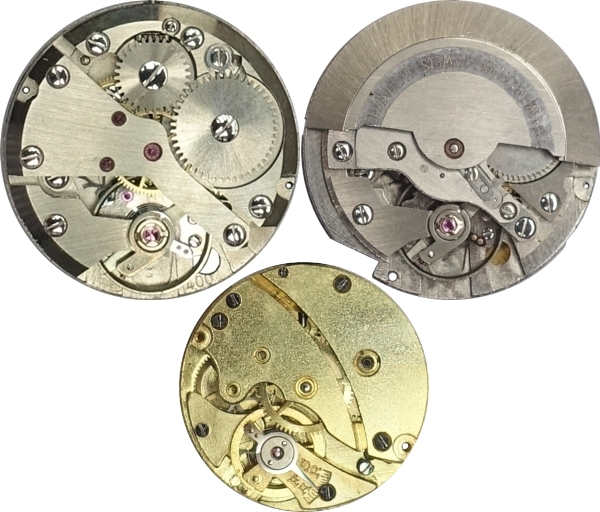
The development and marketing of movements by Kasper & Co. began in Pforzheim in 1932. The company was presumably the first movement manufacturer in Germany’s largest jewelry and watchmaking city.
Like many manufacturers, Kasper began with movements with cylinder escapements (calibers 100 to 400). These were later followed by movements with a Swiss lever escapement, both hand-wound and automatic (calibers 500 to 14xx). Kasper also produced a single pin lever movement, the caliber 1300.
Production of the company’s own movements was probably discontinued around 1980.
Overview of Kasper movements
| Caliber | Size | Escapement | Winding |
|---|---|---|---|
| 100 | 8 3/4´´´ | Cylinder | Hand wind |
| 200 old | 5 3/4 x 8 3/4´´´ | Cylinder | Hand wind |
| 200 new | 5 3/4 x 8 3/4´´´ | Cylinder | Hand wind |
| 300 | 10 1/2´´´ | Cylinder | Hand wind |
| 350 | 10 1/2´´´ | Cylinder | Hand wind |
| 400 | 5 1/4 x 8 3/4´´´ | Cylinder | Hand wind |
| 500 | 8 3/4´´´ | Swiss lever | Hand wind |
| 600 old | 5 3/4 x 8 3/4´´´ | Swiss lever | Hand wind |
| 600 new | 5 3/4 x 8 3/4´´´ | Swiss lever | Hand wind |
| 700 | 10 1/2´´´ | Swiss lever | Hand wind |
| 750 | 10 1/2´´´ | Swiss lever | Hand wind |
| 800 | 10 1/2´´´ | Swiss lever | Hand wind |
| 900 | 10 1/2´´´ | Swiss lever | Hand wind |
| 900 CLD | 10 1/2´´´ | Swiss lever | Hand wind |
| 901 | 10 1/2´´´ | Swiss lever | Hand wind |
| 950 | 10 1/2´´´ | Swiss lever | Hand wind |
| 951 | 10 1/2´´´ | Swiss lever | Hand wind |
| 952 | 13´´´ | Swiss lever | Hand wind |
| 1000 old | 13´´´ | Swiss lever | Automatic |
| 1000 new | 13´´´ | Swiss lever | Automatic |
| 1050 | 13´´´ | Swiss lever | Automatic |
| 1100 | 5 3/4 x 6 3/4´´´ | Swiss lever | Hand wind |
| 1110 | 5 3/4 x 6 3/4´´´ | Swiss lever | Hand wind |
| 1120 | 5 3/4 x 6 3/4´´´ | Swiss lever | Hand wind |
| 1200 | 5 3/4 x 8 1/2´´´ | Swiss lever | Hand wind |
| 1300 | 5 3/4 x 8 3/4´´´? | Pin lever | Hand wind |
| 1400 | 10 1/2´´´ | Swiss lever | Hand wind |
| 1401 | 10 1/2´´´ | Swiss lever | Hand wind |
| 1410 | 11 1/2´´´ | Swiss lever | Hand wind |
| 1411 | 11 1/2´´´ | Swiss lever | Hand wind |
| 1412 | 11 1/2´´´ | Swiss lever | Hand wind |
| 1450 | 11 1/2´´´ | Swiss lever | Automatic |
| 1451 | 11 1/2´´´ | Swiss lever | Automatic |
| 1452 | 11 1/2´´´ | Swiss lever | Automatic |
| 1455 | 13 1/4´´´ | Swiss lever | Automatic |
| 1464 | 13 1/2´´´ | Swiss lever | Automatic |
| 1500 | 11 1/2´´´ | Swiss lever | Automatic |
Movements with cylinder escapement
Kasper 100
Unfortunately, the sources do not agree on whether the Kasper 100 or the Kasper 200 was the first movement with cylinder escapement to be built from 1932 onwards. They are probably not far apart in time, at least. The oldest reference I could find for this movement comes from a Jacob catalog from 1938. Due to its diameter of 8 3/4´´´, it is mainly suitable for ladies’ watches.
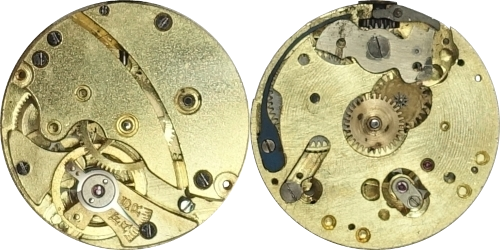
It has no seconds display, has 6 jewels, a rocking bar winding mechanism, has the click on the dial side and the balance oscillates at the classic 18,000 bph (beats per hour).
Kasper 200
A 5 3/4 x 8 3/4´´´ form movement with cylinder escapement. This movement was also designed for ladies’ watches. Only later was it given the caliber designation Kasper 200.
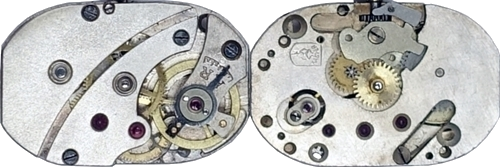
Kasper specified the movement size as 5 1/4´´´ instead of 5 3/4´´´. At that time, many manufacturers tried to make movements appear either slightly larger or smaller than they actually were. Such size specifications should therefore only be taken as a rough indication.
Like many other small movements, it has no seconds, has 10 jewels, a rocking bar winding mechanism, has the click on the dial side and the balance oscillates at 18,000 bph. Over time, the diameter of the balance was increased from 7.0 to 7.4 mm, which is why the movement is listed in some movement catalogs in the variants 200 old and 200 new.
As can be seen in the advertisement above, the Kasper 200 was still being sold in 1950, at a time when cylinder movements had long since been replaced by the Swiss lever escapement. But it was cheap to produce and any watchmaker knew how to handle it. This movement was still being advertised by Kasper in 1952, so it was probably built over a period of around 20 years!
Kasper 300, 350
The third cylinder movement from Kasper, which was intended for men’s watches with its diameter of 10 1/2´´´. In contrast to the two ladies’ movements, it has a small second (caliber 300) or an indirect central second (caliber 350). I was able to find the oldest reference to the Kasper 300 in the Jacob catalog from 1942, but the movement may have existed a few years earlier. The Kasper 350 was probably only created a few years later.
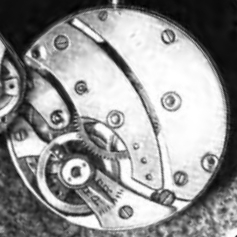
[Source: DIE UHR Nr. 6 1950]
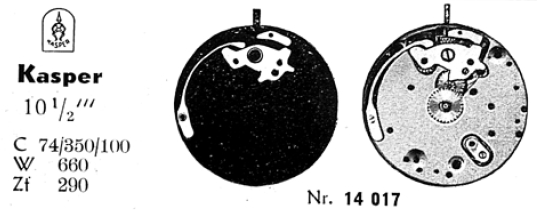
Kasper 400
The Kasper 400 with 5 1/4 x 8 3/4´´´ is listed in the 1957 part of the Flume K1 catalog. Unfortunately, I have not yet seen a real example of it. This movement probably also has 5 3/4´´´ rather than 5 1/4´´´.
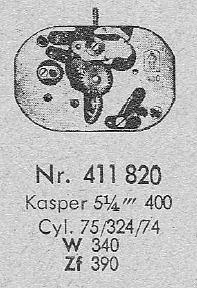
[Source: Flume K1 1957]
Movements with Swiss lever escapement
Kasper 500
The Kasper 500 with 8 3/4´´´, 15 or 17 jewels, small seconds, monometallic screw balance, 18,000 bph and a Monorex shock protection looks quite modern. Like the movements with cylinder escapement, it has a rocking bar winding mechanism and the click on the dial side. The oldest reference I could find to the movement comes from an advertisement in DIE UHR 17/1952, where it is still referred to as caliber 8 3/4´´´, so the caliber number 500 was probably only assigned to it later.
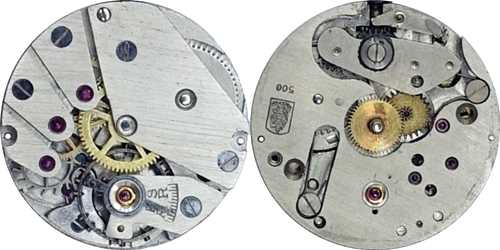
Kasper 600
A form movement with 5 3/4 x 8 3/4´´´, 15 or 17 jewels, without seconds, with monometallic screw balance, 18,000 bph, rocking bar winding mechanism and click on the dial side. Available with or without Monorex shock protection.
This movement is also illustrated in the above-mentioned advertisement in DIE UHR 17/1952. The movement is available in two different base plate thicknesses, an older version with 2.0 mm and a newer one with 2.3 mm.
As with the Kasper 200, the manufacturer specified the movement size as 5 1/4´´´ instead of 5 3/4´´´.

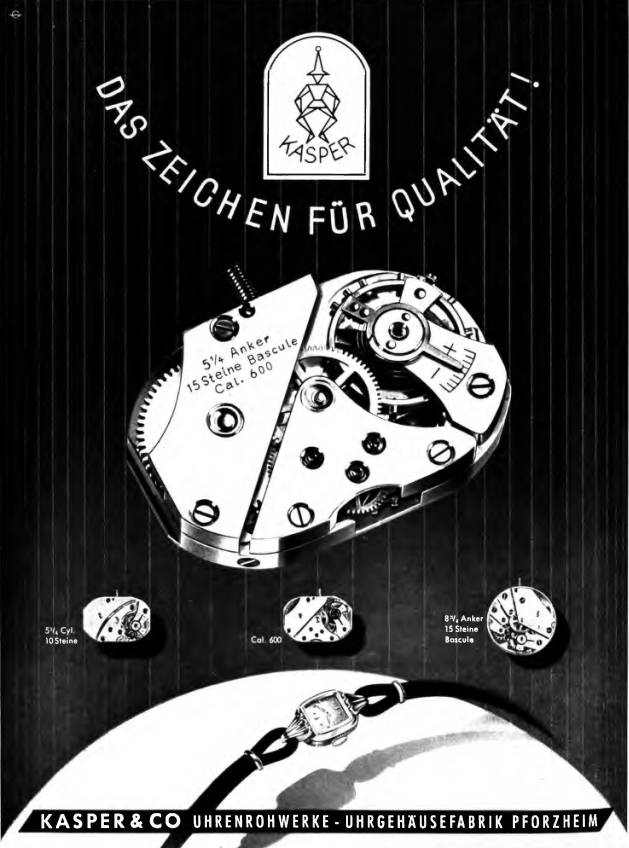
Kasper 700
The first lever movement with 10 1/2´´´ for men’s watches and the first Kasper movement with direct sweeping seconds. It has a monometallic screw balance oscillating at 18,000 bph. DIE UHR 14/1953 reports on this new release. Like all the movements shown so far, it has a rocking bar winding system.
The special feature of this movement is that it could be supplied either with visible winding wheels on the bridge side or with a hidden ratchet, i.e. with the click on the dial side. The former variant had the advantage that the mainspring could be unwound without removing the dial. A novelty for Kasper movements!
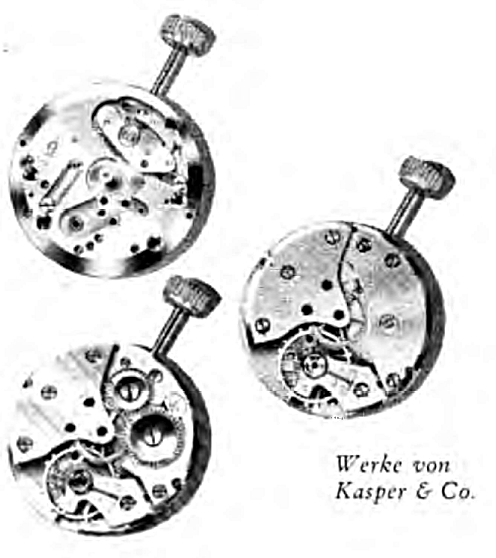
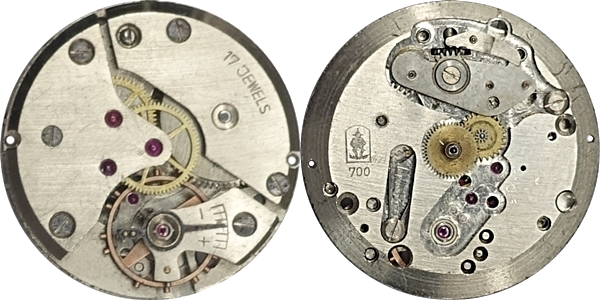
Kasper 750, 800
Both movements with 10 1/2´´´, direct center seconds, 17 or 21 jewels, monometallic screw balance and Monorex shock protection are further developments of the Kasper 700. They have a modified rocking bar winding system, which Kasper called Bascule-Spezial winding or EXACTAVUE. The winding system was presented in detail in Uhrenjournal 3/1954.
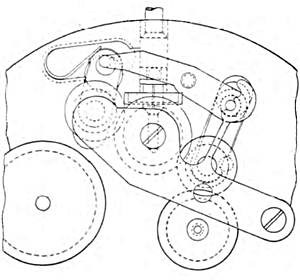
[Source: DIE UHR 02/1954]
The Kasper 750 has the click on the dial side, the Kasper 800 has visible winding wheels on the bridge side.
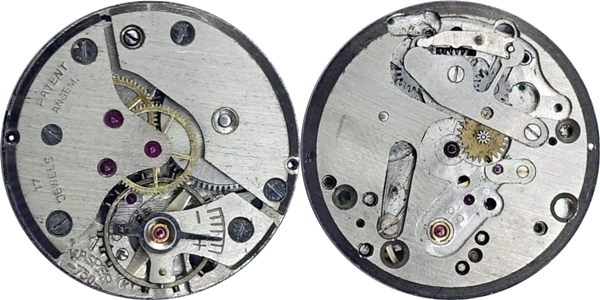

Kasper 900, 901, 950, 951, 952
With the 900 caliber family, Kasper switched from rocking bar to yoke winding. The movements are hand-wound, have a diameter of 10 1/2´´´ (exception 952: 13´´´), 17 or 21 jewels and direct sweeping seconds. The monometallic screw balance or nickel balance oscillates at 18,000 bph and has a Monorex shock protection. I was able to find the oldest reference to the caliber 900 in a Kasper catalog from around 1955. And the calibers 901, 951 and 952 in the Flume K2 catalog from 1962. The Kasper 950 then also appears in the Flume K3.
Movement family:
- 900: 10 1/2´´´
- 900 CLD: 10 1/2´´´, date
- 901: 10 1/2´´´, different base plate
- 950: 10 1/2´´´, date
- 951: 10 1/2´´´, date
- 952: 13´´´, date


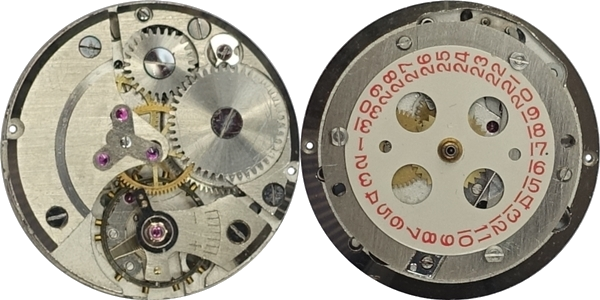
The movements of the 900 family are rather rare. They were probably soon replaced by the 1400 caliber family.
Kasper 1000, 1050
The first generation of automatic movements from Kasper. They have a diameter of 13´´´, sweeping seconds, 25 jewels and a bidirectional winding rotor. The base movement is the Kasper 900 with an enlarged base plate.
I was able to find the oldest reference to the Kasper 1000 in DIE UHR 22/1956.
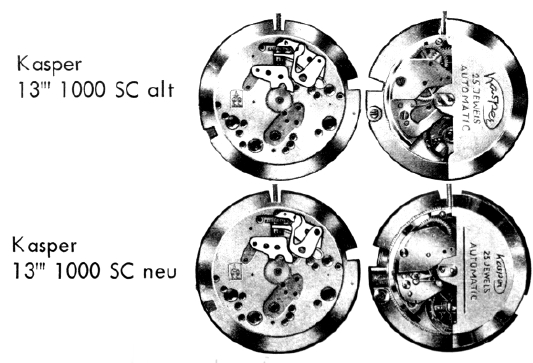
There is an old and a new version of the movement. In the old version, the rotor carrier also serves as a shock absorber for the oscillating weight. This is not the case with the new version, which can also be recognized by a wide slot in the rotor.
The Kasper 1050 also has a date:
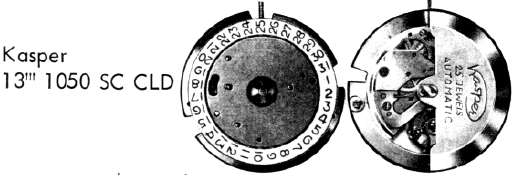
Kasper 1100, 1110, 1120
At 5 3/4 x 6 3/4´´´, this is the smallest movement produced by Kasper for ladies’ watches and the first with yoke winding instead of rocking bar winding.
Here, too, the manufacturer specified the size as only 5 1/4´´´.
The movement has been available since at least 1956 as caliber 1100 with 17 and 21 jewels, 18,000 bph, without seconds and with or without shock protection. It is listed in DIE UHR 22/1956. Around 1968, the caliber 1110 followed with a higher beat rate of 21,600 bph. It is listed in the Neue Uhrmacher-Zeitung 05/1968.
And from around 1969, the Kasper 1120 with 17 jewels, 21,600 bph, indirect sweepings seconds, a height of 4.25 mm and various types of shock protection. According to Kasper, it was the world’s smallest movement with sweeping seconds at the time! The oldest reference to this movement that I know of comes from the Neue Uhrmacher-Zeitung 14/1969.
Movement family:
- 1100: Hand winding, 18,000 bph, no seconds
- 1110: Hand winding, 21,600 bph, no seconds
- 1120: Hand winding, 21,600 bph, indirect sweeping seconds
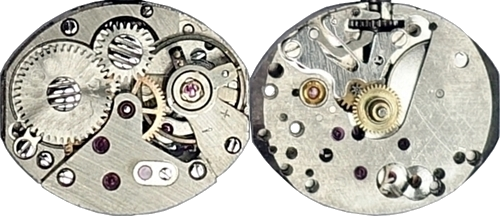
Kasper 1200
Another small form movement with 5 3/4 x 8 1/2´´´, 18,000 bph, without seconds, with monometallic screw balance, optionally with 15, 17 or 21 jewels and with or without shock protection. Kasper himself specified the size of this movement as 5 1/4´´´. The movement is illustrated in DIE UHR 14/1957.

The movement was apparently not a great success. At least it was hardly advertised by Kasper in the following years and is only very rarely found in watches. The calibers of the 1100 family probably had the edge here.
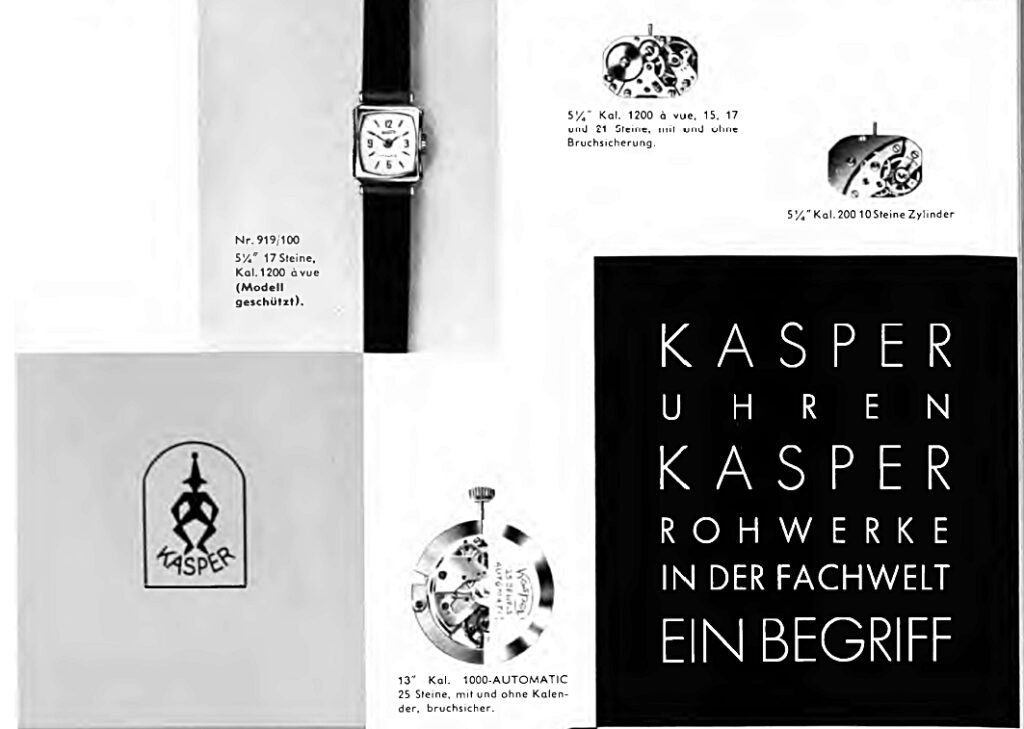
Kasper 1400, 1401, 1410, 1411, 1412
A new generation of movements with manual winding and direct sweeping seconds, which presumably replaced the 900 family. All movements in the family have a nickel balance without screws, tick at 18,000 bph and have an Incabloc shock protection.
The oldest mention of the calibers 1400 and 1401 that I could find was in the Neue Uhrmacher-Zeitung 12/1962.
Movement family:
- 1400: 10 1/2´´´, Hand winding
- 1401: 10 1/2´´´, Hand winding, date
- 1410: 11 1/2´´´, Hand winding
- 1411: 11 1/2´´´, Hand winding, date
- 1412: 11 1/2´´´, Hand winding, date, day
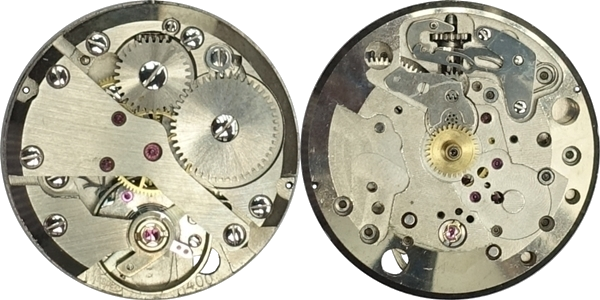
In the movements with a date, this can be adjusted semi-quickly by turning the hands back to approx. 21 o’clock and then forward again to 24 o’clock after the date change. Kasper registered this date setting as a German utility model DE1765745U back in 1958.
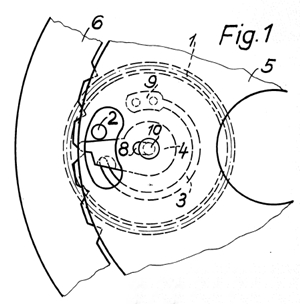
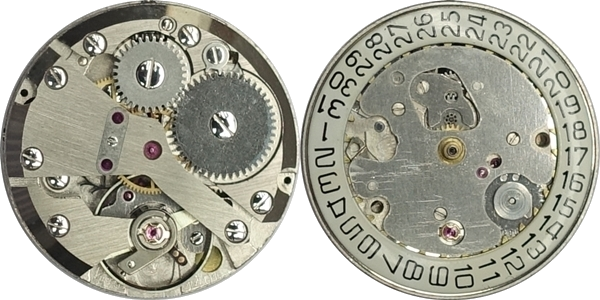
Kasper 1450, 1451, 1452, 1455, 1464
This is the manufacturer’s second generation of automatic movements after the Kasper 1000 calibers. They are based on the Kasper 1400, to which an automatic module has been added. The automatic winds on both directions. The movements have direct sweeping seconds, tick at 18,000 bph and have an Incabloc shock protection, 25 jewels and a power reserve of around 40 hours.
The oldest reference I know of to the calibers 1450, 1451 and 1452 comes from DIE UHR 18/1964.
Kasper registered the rotor locking mechanism in 1965 as German utility model DE1913285U under the title “Halterung für Schwingmassen” (Holder for oscillating masses).
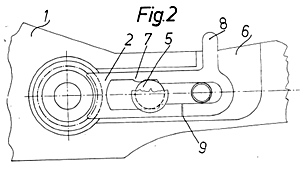
Movement family:
- 1450: 11 1/2´´´, Automatic
- 1451: 11 1/2´´´, Automatic, date
- 1452: 11 1/2´´´, Automatic, date, day
- 1455: 13 1/4´´´, Automatic, digital display: center second, minute, jumping hour
- 1464: 13 1/2´´´, Automatic, date, day
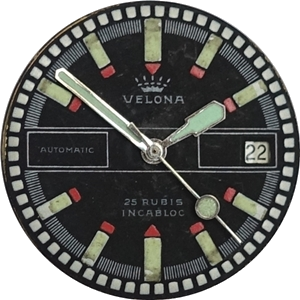
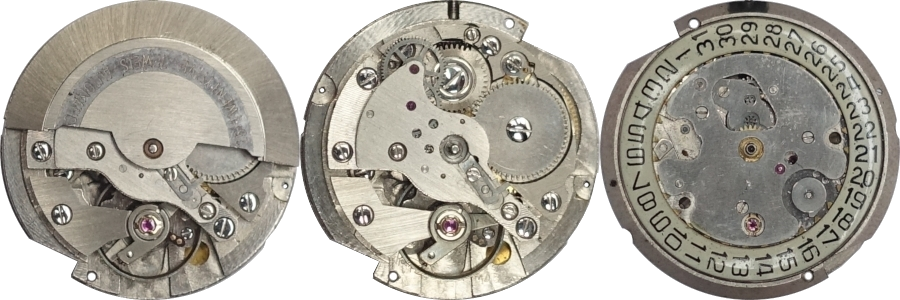
On the movements with date, this can be adjusted semi-quickly, as described above for the hand-wound 14xx movements.

Kasper 1500
An ominous movement that is not listed in any movement identifier that I know of. It appears in agreements between Switzerland and the European Communities in 1972 and 1974, in which the equivalence of certain movements from the European Communities with Swiss movements is confirmed. This opened the way for the production of “Swiss Made” watches with non-Swiss components under certain conditions!
Regarding the Kasper 1500, these documents state that it is an 11 1/2´´´ automatic movement with lever escapement, sweeping seconds, date and day. Unfortunately, I don’t know whether it was ever built.
Movements with pin lever escapement
Kasper 1300
The only pin lever movement built by Kasper is probably 5 3/4 x 8 3/4´´´. It is listed in the Flume K2 catalog from 1962, but not illustrated until the K3 from 1972. I have not yet been able to find a specimen of it, only individual spare parts for the movement. It has a nickel balance without screws and a rocking bar winding system.
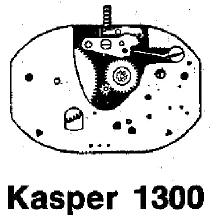
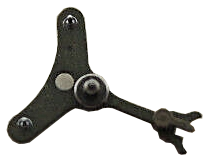

I have a 14K ladies watch, Kasper on the face is all. Used to be my grandmothers, was working until lately.
Probably needs a good serving. Is there a place where I can get it appraised or a website for Kasper watches?
Thanks